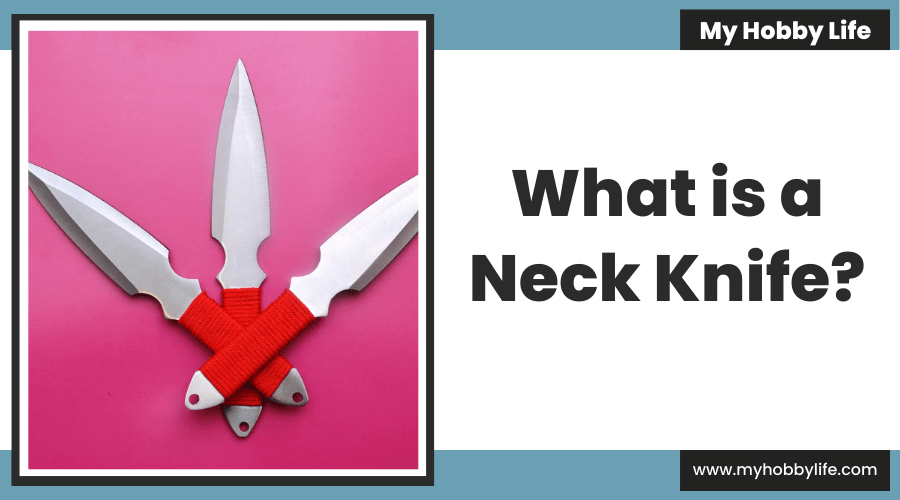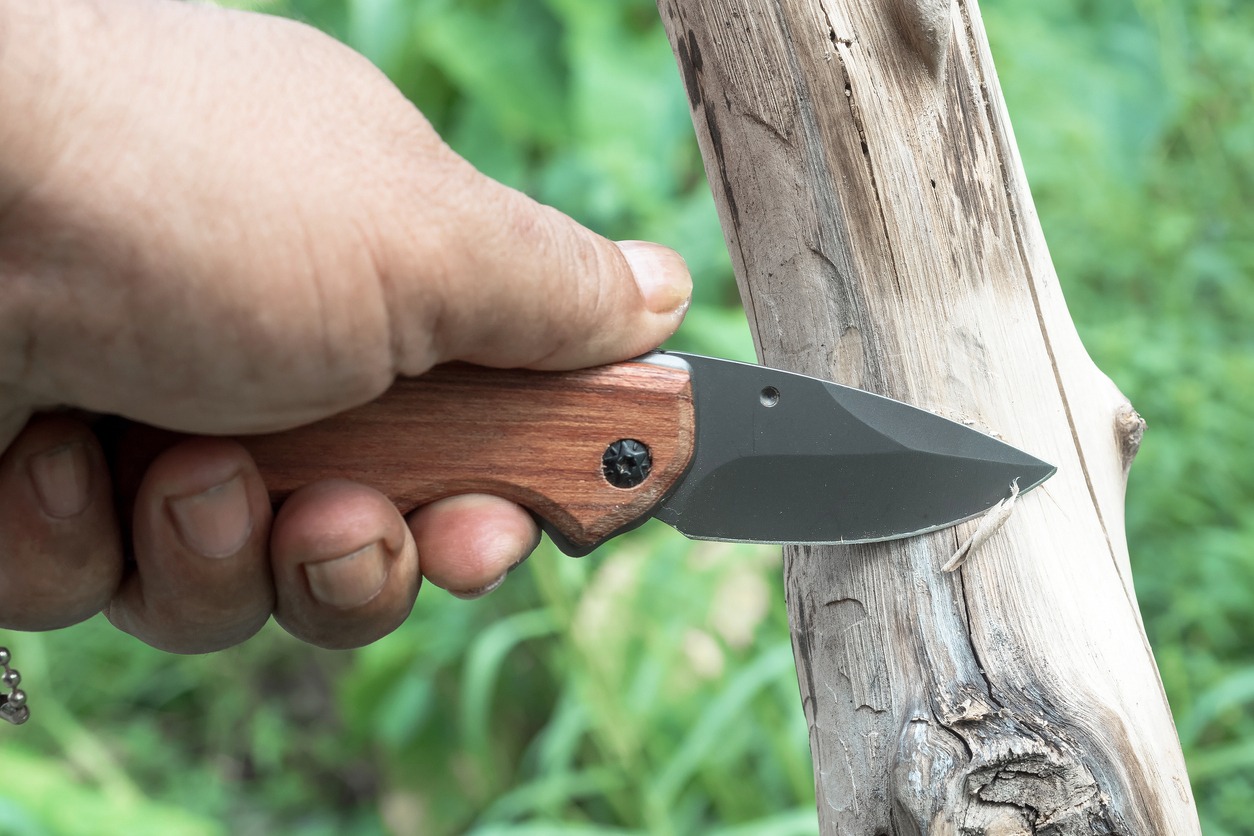The neck knife is frequently an underappreciated and very practical tool to have on hand. Neck knives can come in handy in a pinch or when you don’t have access to other carry knives because of their low-profile, lightweight, and compact design. If you enjoy on-the-go utility/protection, you should pay attention to these strongly fixed-blade knives. The more uses you discover for a high-quality neck knife, the longer you own it. You’ll soon find it difficult to picture getting ready without your dependable and capable companion by your side.
Neck Knife
A neck knife is a little fixed-blade knife that you wear around your neck on a string or chain. The majority of neck knives are fastened in place by friction, a clip, a strap, or a loop while being worn inside a sheath. Neck knives feature short overall lengths, narrow profiles, and thin blades. They are regarded as concealed carry and slide under your shirt. There are two ways to hang a neck knife: handle-down or handle-up (also known as the mountain-man style carry). Both offer benefits and drawbacks, as well as several security and comfort issues.
The majority of neck knives are single-edged, and their blades are often no longer than 3 inches. They are also almost always shorter than 4″ in length. The majority of neck knives are utilized for utility purposes, but you may also get defensive and dagger models. Let’s look at the function of a neck knife now that we understand what it is.
Why Would Someone Use A Neck Knife?
Due to their accessibility and affordability, pocket knives are highly versatile and can be used for a variety of purposes. Neck knives aren’t typically your primary carry knives for many folks. Neck knives are great support knives and having one on you at all times makes you feel at ease. Even in the shower, some ardent knife fans adhere to this rule.
The majority of them are designed with compact utility in mind and have short blades, rust resistance, high-quality steel, and ergonomic handles. Additionally, there are some knives specifically designed for self-defense that are often smaller and only used for defense. They are highly keen and capable of their size. It is quick and simple to cut through rope, cloth, fruit, and basic household tasks like prying and cutting open boxes. They are made for users who need quick access to a sharp and effective blade but may not always have a pocket knife at hand.
Advantages of Having a Neck Knife
There are benefits and drawbacks to anything you purchase. There are no neck knives or blades that are genuinely perfect. It’s important to try to get a neck knife that perfectly suits your requirements and personal taste.
- Affordable: Most neck knives cost less than most pocket knives. You can acquire neck knives of the highest caliber, made with the best materials, for incredibly low costs. A mid-to-high-range neck knife can cost you much less than what you’d pay for a higher-end fixed knife and less than half of what you’d pay for an upper-end pocket knife.
- It is Kept Hidden: The majority of people wear their neck knives under their shirts, hanging over their chest. Between your pectoral muscles in the middle of your chest, they rest gently. Unless you start jogging and their tiny profile keeps them pressed against you, you won’t notice them bouncing around. You may not be aware that you are wearing a knife around your neck because of the ball chain or strap around your neck. They’re fantastic to have on hand whenever you leave the house but be aware that concealed carry may be prohibited in your nation or state.
- Accessible: They have great accessibility with the knife so close by. If you’re willing to wear your knife outside of your shirt or jacket, this is enhanced even further. Here, some restrictions merit your notice. The chest straps from a backpack may obstruct the chain of the knife and make it more difficult to reach it. You should also think about the kind of sheath your knife is using. The release of the knife from some sheaths requires two hands and an additional degree of security.
- Convenience: Most people undoubtedly carry neck knives for this reason. They require the least amount of room and work while providing adequate utility or protection. The majority of neck knives have short, thin handles and tiny blades, measuring only a few inches in length. They are typically lightweight and quite flat, even when sheathed. Compared to smaller pocket knives and other fixed knives, they are much lighter. Once you’ve been wearing a neck knife for a time, you probably won’t even be aware that it’s there.
- Fixed Knife: Neck knives are quite robust and durable, despite their smaller size and lighter weight. Their small size enhances their structural integrity and increases their resistance to twisting and stabbing force. You have a significant edge over pocket knives because there are fewer moving parts.
- Portability: You are allowed to bring a neck knife into the shower or the pool. They’re also great if you don’t want to carry a belt but still want to carry a knife. Once you become used to carrying one, you won’t often even notice it’s there because of how light it is. While wearing a backpack with hip straps, you can still access the knife, however, you would find it difficult to swiftly and efficiently remove a pocket knife.
Disadvantages of Neck Knife
- Legality: It is prohibited to carry a concealed knife in several US states as well as many other nations. You must conduct a careful study to determine whether carrying a neck knife is permitted by your state, local government, or country.
- Uncomfortable: Neck knives can be pretty annoying if you’ve never used one before. You’ll have to put up with it bouncing up and down with each step if you’re out for a jog. Having a knife around your neck can also be rather inconvenient, not to mention the possible safety hazards if the blade unintentionally comes loose from the sheath.
- Slow Re-Sheathing: To put the neck knife back into its sheath, you’ll frequently need to use both of your hands. The sheath is held stable with one hand while the other inserts the knife into the sheath. Buying a cheap sheath that closes quickly but is less effective at keeping the knife securely tucked away is not worth the risk.
A terrific approach to experimenting with your design and style is using neck knives. Before deciding whether or not they will work for you, take the time to investigate the various styles that they come in.

